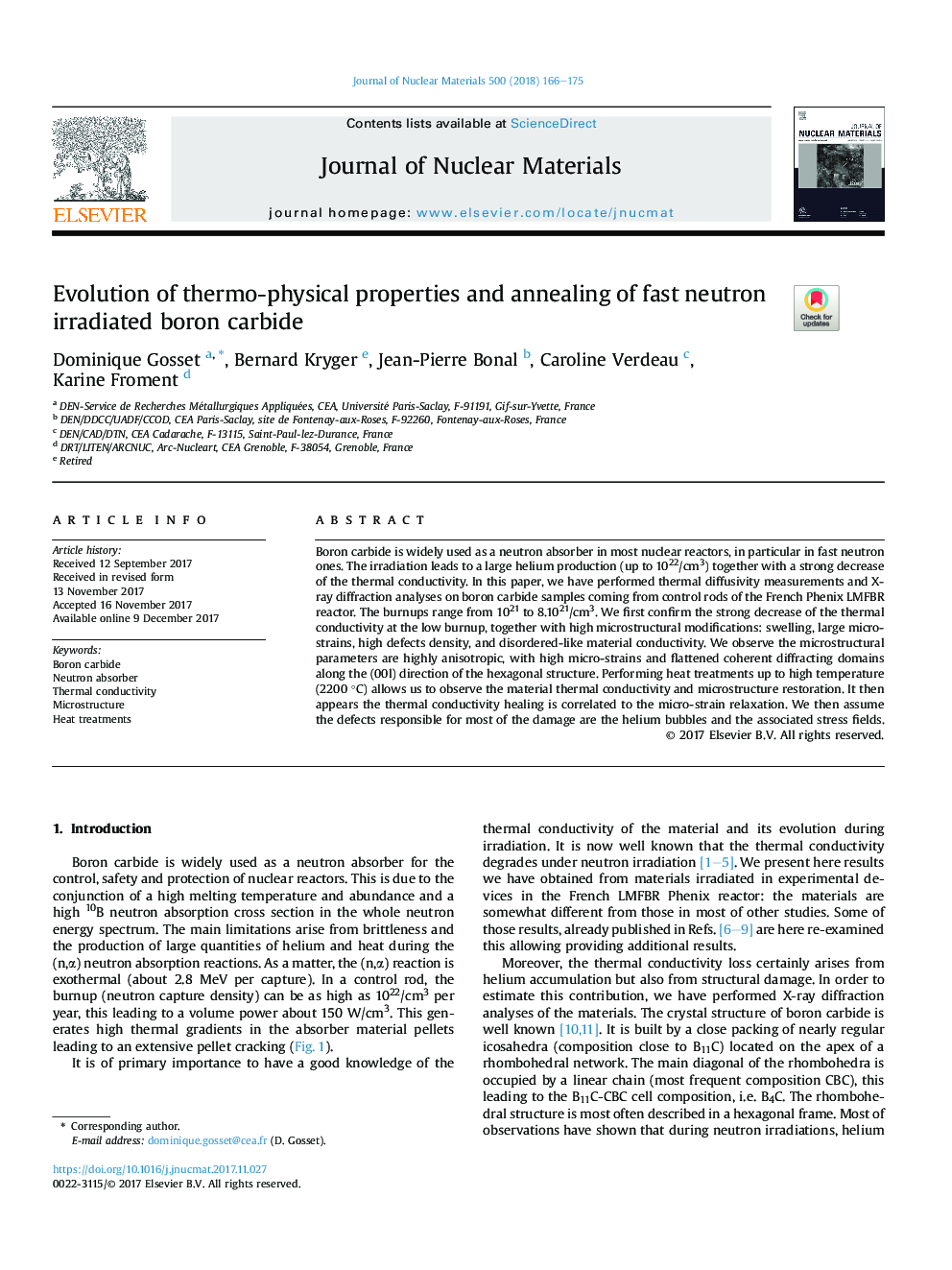| Article ID | Journal | Published Year | Pages | File Type |
|---|---|---|---|---|
| 7963415 | Journal of Nuclear Materials | 2018 | 10 Pages |
Abstract
Boron carbide is widely used as a neutron absorber in most nuclear reactors, in particular in fast neutron ones. The irradiation leads to a large helium production (up to 1022/cm3) together with a strong decrease of the thermal conductivity. In this paper, we have performed thermal diffusivity measurements and X-ray diffraction analyses on boron carbide samples coming from control rods of the French Phenix LMFBR reactor. The burnups range from 1021 to 8.1021/cm3. We first confirm the strong decrease of the thermal conductivity at the low burnup, together with high microstructural modifications: swelling, large micro-strains, high defects density, and disordered-like material conductivity. We observe the microstructural parameters are highly anisotropic, with high micro-strains and flattened coherent diffracting domains along the (00l) direction of the hexagonal structure. Performing heat treatments up to high temperature (2200 °C) allows us to observe the material thermal conductivity and microstructure restoration. It then appears the thermal conductivity healing is correlated to the micro-strain relaxation. We then assume the defects responsible for most of the damage are the helium bubbles and the associated stress fields.
Related Topics
Physical Sciences and Engineering
Energy
Nuclear Energy and Engineering
Authors
Dominique Gosset, Bernard Kryger, Jean-Pierre Bonal, Caroline Verdeau, Karine Froment,
